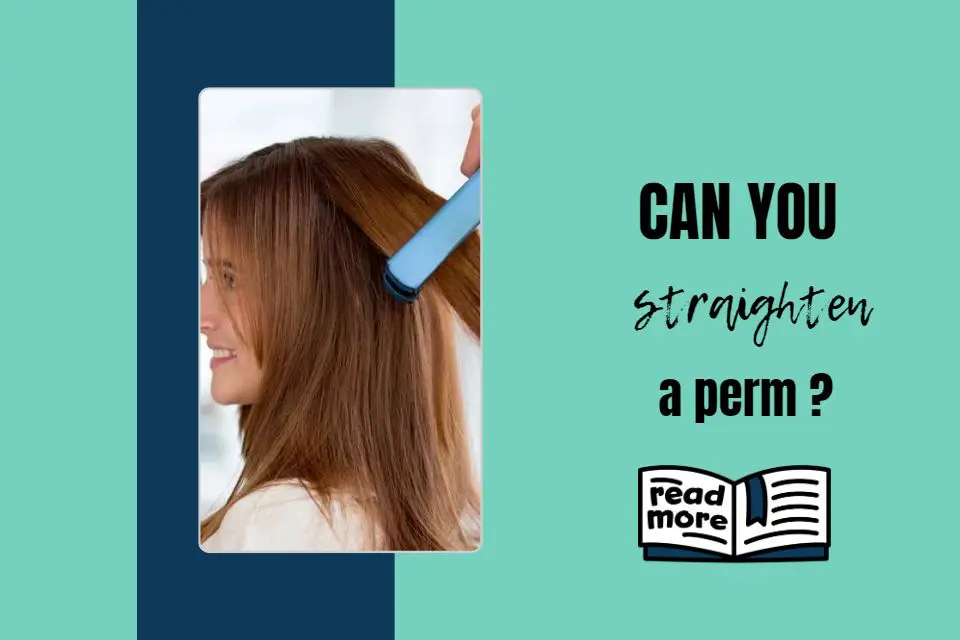Does hair fall out after laser hair removal? This is a common question that people who are considering this cosmetic procedure ask. Laser hair removal has become an increasingly popular method of getting rid of unwanted hair, but many people are still unsure about how it works and what to expect. In this article, we will explore whether or not hair falls out after laser hair removal and provide you with all the information you need to know.
If you’re considering laser hair removal or simply want to learn more about the process, this article is for you. We’ll discuss the science behind laser hair removal, the factors that can affect its effectiveness, and tips for preparing for and recovering from the procedure. By the end of this article, you’ll have a better understanding of whether laser hair removal is right for you and what to expect from the process. So, let’s get started!
Overview of hair fall after laser hair removal.
Hair loss after laser treatment typically occurs a few days after your procedure. It will begin as thinning of your existing hairs and eventually lead to bald patches in some areas or even complete baldness in others. Unfortunately, this side effect is often permanent, so if you experience too much shedding or baldness, you may need to consider alternative options such as electrolysis or waxing for long-term hair removal solutions.
The Science Behind Hair Fall After Laser Hair Removal
1- How laser hair removal works
The process begins with applying a cooling gel or cream that helps protect your skin from the heat generated by the laser. Then, an intense beam of light is delivered directly into each hair follicle below your skin’s surface. The light energy emitted from the laser is attracted to melanin or dark pigment in your hair, which causes it to absorb this energy and convert it into heat. This heat then travels through each follicle and destroys it without harming any surrounding tissue.
2- The hair growth cycle
The human hair growth cycle is a complex process unique to everyone. It involves the growth, transition and shedding of follicles in a continuous loop. While there are some general timelines for the hair growth cycle, they can vary significantly from person to person. Understanding the process can benefit those looking to improve or manage their hair health.
The human scalp contains around 100,000 hairs, with countless more growing underneath the skin’s surface. The time it takes for a single follicle to complete an entire lifecycle range from two to seven years, depending on factors like genetics and hormones. During this period, individual hairs undergo three distinct stages: anagen, catagen, and telogen.
3- The impact of laser hair removal on hair growth
Laser hair removal is a procedure that has been used for decades to reduce the amount of body and facial hair. The process involves using a specialized laser that emits light energy to damage the hair follicles, which prevents them from growing new hairs. While most people turn to laser hair removal to achieve smoother skin, there are also potential impacts on hair growth that you should consider before undergoing the procedure. Firstly, it’s important to note that while laser hair removal can help slow down or stop unwanted body or facial hair from growing back, it will not prevent all hairs from regrowing permanently. The procedure results vary depending on everyone’s biology and lifestyle habits, so some people may still experience regrowth after laser treatment. Additionally, repeated treatments may be necessary to keep up with new growth.
Factors that Affect Hair Fall After Laser Hair Removal
1- Skin type
Skin type is an essential factor in taking care of your skin. It determines the types of products, routines, and lifestyle changes most beneficial for your needs. Knowing your skin type can help you choose the right products to keep your skin looking its best.
There are four main skin types: normal, oily, dry, and combination. Normal skin has a balanced oil and moisture level with few blemishes or sensitivity concerns. Oily skin tends to be shiny due to overactive sebaceous glands producing too much sebum, which can lead to clogged pores and breakouts. Dry skin looks flaky or dull due to a lack of hydration caused by insufficient oil production from the sebaceous glands resulting in tightness and sometimes discomfort.
Credit: Does hair grow back after laser hair removal?
2- Hair color and texture
Hair color and texture are two fun and exciting ways to play with your look. Whether you want to make a subtle change or go all out, there are plenty of options to suit your style. From balayage highlights to root touch-ups, you can find the perfect shade for your hair that fits your lifestyle. Not only this but if you’re looking for an extra boost of volume or curl, there are products specifically designed for different textures. Here’s what you need to know about changing your hair color and texture!
Highlighting or coloring your hair is a great way to add dimension and make a significant impact without having a long-term commitment. Whether it’s going blonde from brunette or vice versa, adding balayage highlights or lowlights, the possibilities are endless!
3-Use of Laser
Lasers are used in various applications, from medical treatments to manufacturing. But not all lasers are created equal – different lasers have different capabilities and use. What type of laser is best for you?
The most common type of laser is the gas laser. Gas lasers use gas mixtures such as argon, helium-neon, or carbon dioxide to generate light waves. These lasers have good beam stability and can accurately cut and weld materials, making them ideal for industrial applications. They’re also relatively inexpensive compared to other types of lasers.
Solid-state lasers are another commonly used type that employs solid gain media rather than gases or liquids. The gain medium is usually made up of tiny particles, often crystals or glass doped with ions which produce short pulses when excited by an external source like electricity or light.
4-The expertise of the practitioner
The expertise of the practitioner is an essential component in successful medical care. A knowledgeable practitioner can diagnose and treat various illnesses and conditions precisely, providing relief for their patients. Additionally, they are trained to identify signs indicating severe illness or disease and take necessary precautionary measures.
The importance of having a knowledgeable practitioner cannot be overstated; they must understand how to read test results, make accurate diagnoses, provide proper treatments, and suggest lifestyle changes if necessary. To ensure they are up to date on advances in medical technology and treatments, practitioners must continually seek education opportunities throughout their careers. This allows them to stay current on best practices to provide their patients with the most effective care possible.
5- Comparison with other hair removal methods
Hair removal is a task that many of us must do regularly. We have a multitude of options when it comes to removing unwanted body and facial hair, but how do these methods compare? This article will look at different hair removal techniques and how they compare with each other in terms of cost, effectiveness, and convenience.
The most common method for hair removal is shaving. It is often the cheapest option, as all you need are razors and shaving cream. However, this technique can be quite time-consuming and may only last for a while before needing to be repeated. Additionally, it can cause skin irritation due to using sharp objects on sensitive areas of the body.
Another popular hair removal method is waxing.

Managing Hair Fall After Laser Hair Removal
1- Tips for reducing hair fall.
The issue of hair fall can be a frustrating and embarrassing one for many men and women. There are several causes for this common problem, but thankfully there are also ways you can reduce your hair fall. Here are some tips to help you keep your locks looking healthy:
Firstly, it’s essential to get enough sleep. Poor sleep habits can often lead to stress and hair loss, so aim for at least 7-8 hours of restful sleep each night. Additionally, try to avoid tight hairstyles such as braids or buns that pull on the scalp too much – this is known as traction alopecia and can cause permanent damage if not appropriately addressed.
Your diet is also an essential factor when it comes to minimizing hair loss. Eating a balanced diet full of essential nutrients promotes healthy follicles and keeps your strands strong from the roots up.
2- Aftercare and maintenance
Aftercare and maintenance are critical parts of any surgical procedure. It can help ensure a speedy recovery while also helping to reduce the risk of complications. To get the best results after surgery, following your physician’s instructions is essential. This includes taking antibiotics as prescribed, getting plenty of rest, and using cold compresses or pain medication when needed. It is also crucial to keep all incisions clean and dry, avoid straining or heavy lifting for at least one week after surgery and report any signs of infection or unusual symptoms immediately.
Additionally, diet plays a vital role in successful healing post-surgery; foods rich in protein, such as lean meats, fish, and beans, can help build muscle which aids in the repair process, while low-fat foods like fruits and vegetables provide essential vitamins and minerals that are essential for optimal health outcomes.
3-Alternative hair removal options
Hair removal can be a tedious task. While there are many traditional options for hair removal, such as shaving, waxing, and tweezing, there are also some alternative methods you may want to consider. These alternative hair removal options provide less painful alternatives that still get the job done. Try sugaring or threading if you’re looking for a more natural approach to removing unwanted body hair. Sugaring is a method of removing body hair that has been around since ancient Egypt times and involves using an all-natural paste made from sugar, lemon juice, and water which is applied over the skin in the direction of the hair growth and removed in the opposite direction.

Related Reading: Can I shave after laser hair removal?
Conclusion
In conclusion, hair fall after laser hair removal can be a concern for many people, but it is not a guaranteed side effect of the procedure. The likelihood of experiencing hair fall after laser hair removal depends on various factors, including skin type, hair color and texture, the type of laser used, and the practitioner’s expertise. To minimize the risk of hair, fall after laser hair removal, it is essential to follow the aftercare instructions provided by your practitioner and to maintain a healthy skin and hair regimen. If you are experiencing hair fall after laser hair removal, there are ways to manage it, including reducing stress, using gentle hair care products, and seeking alternative hair removal options. Ultimately, it is essential to remember that hair fall is a normal part of the hair growth cycle, and laser hair removal can positively impact hair growth in the long run.
Frequently Asked Questions

Fashion Panda is pleased to introduce Luisito Samra, the skin care blog writer specializing in hair, eyebrows, lashes, and nails. With a passion for all things beauty, Luisito is dedicated to helping his readers achieve their best possible appearance through the latest and greatest in hair, eyebrow, lash, and nail care.
As a writer for Fashion Panda, Luisito brings his in-depth knowledge and expertise to the table. From the latest hair care products to tips for maintaining healthy, strong nails, he covers it all. With a focus on providing reliable, up-to-date information that is backed by scientific research and expert opinions, Fashion Panda readers can trust that they are getting the best possible advice. Luisito also understands that everyone’s skin, hair, and nails are different, and works to offer a range of solutions and recommendations to suit every need.



